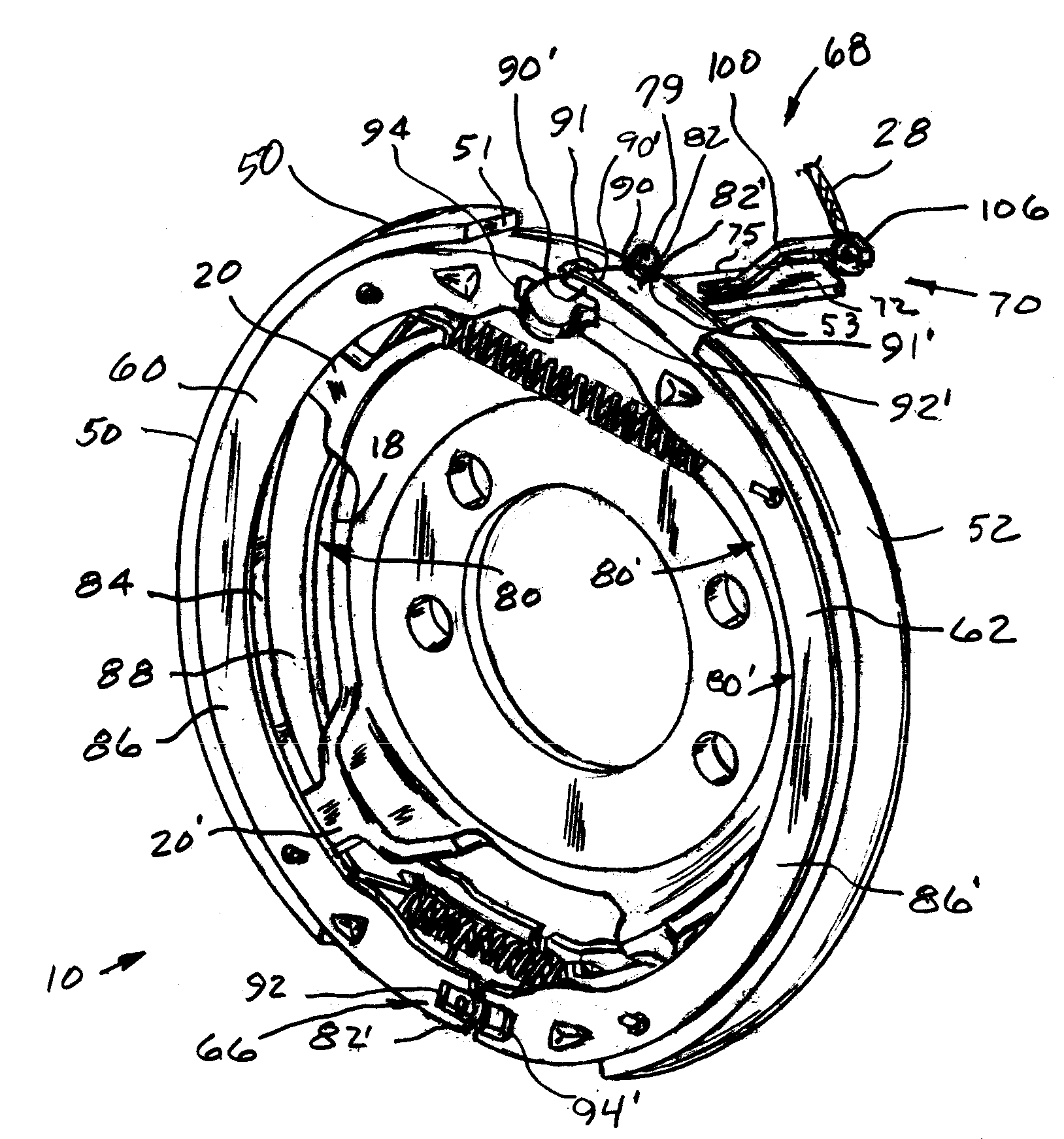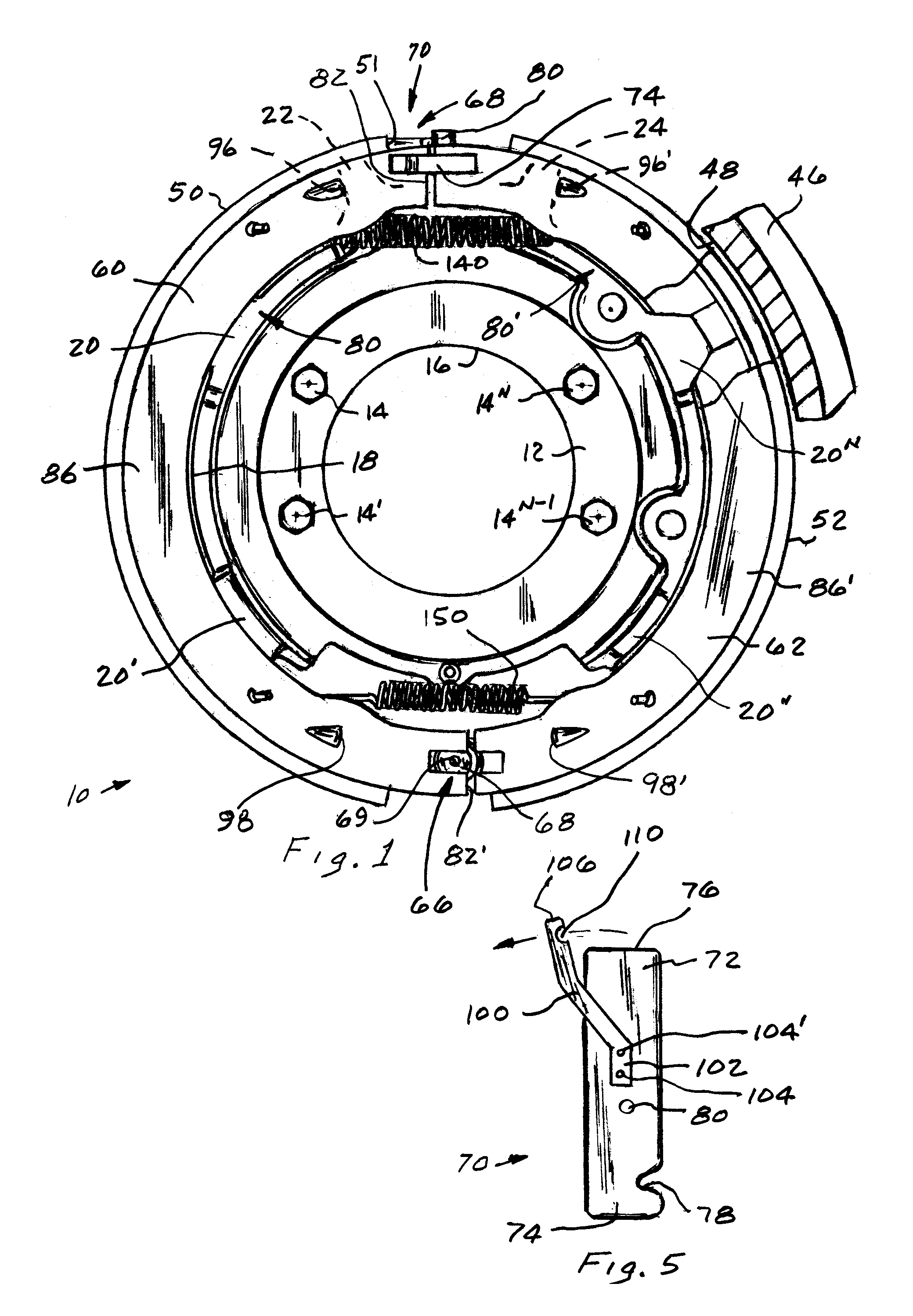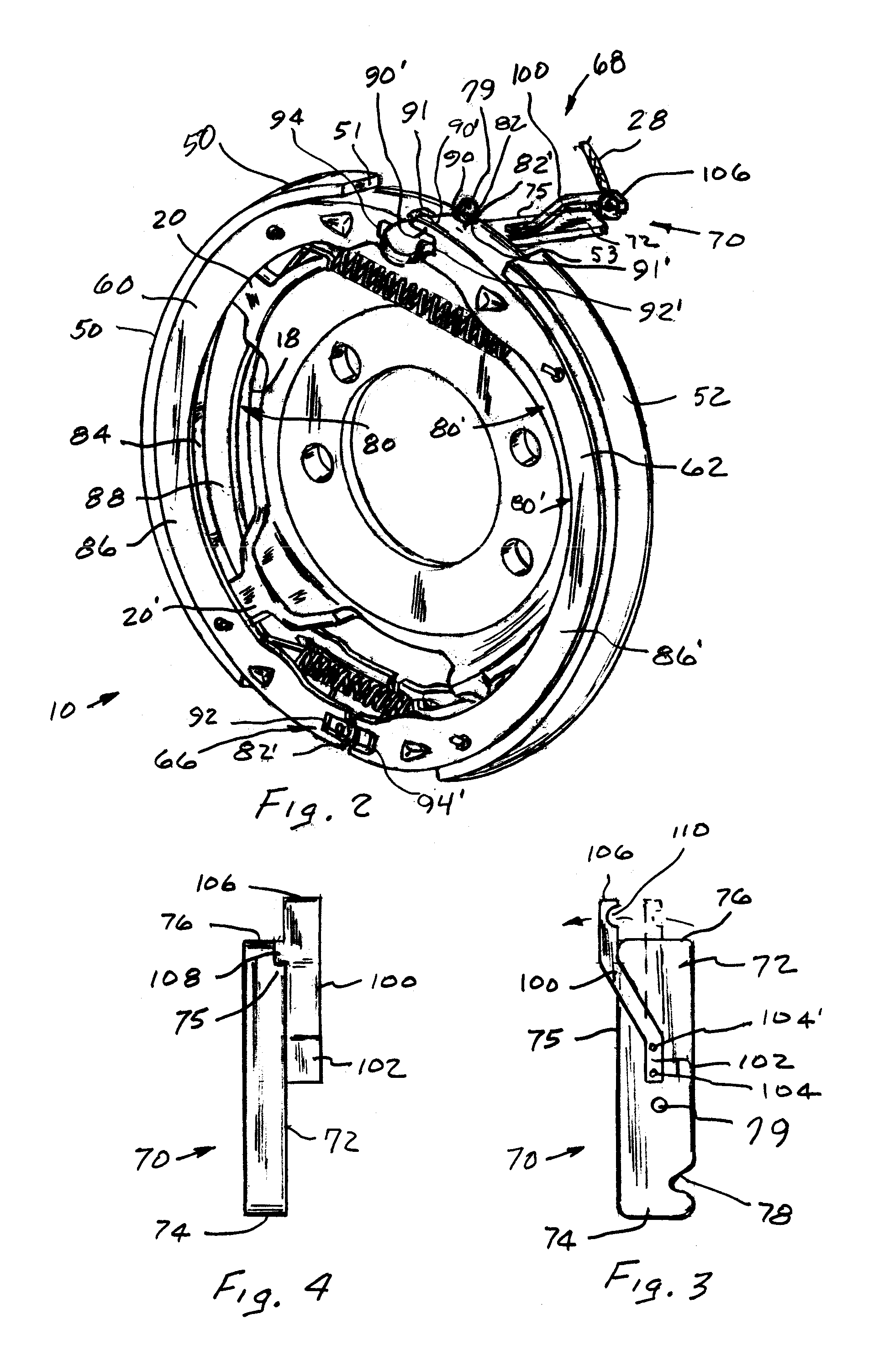Reaction lever for a parking brake
a technology of a brake and a reaction lever, which is applied in the direction of brakes, actuators, drum brakes, etc., can solve the problems of excessive manual input force used to set the brake, damage to the brake components,
- Summary
- Abstract
- Description
- Claims
- Application Information
AI Technical Summary
Benefits of technology
Problems solved by technology
Method used
Image
Examples
Embodiment Construction
[0013]The brake 10, shown in FIGS. 1 and 2, is part of a brake system the functions as a service brake and a parking brake for a vehicle. The parking brake is often referred to as a drum-in-hat and includes a drum 46 that is rotatable about an axis of an axle shaft that has an inner cylindrical surface 48 to define a braking surface for first 50 and second 52 friction surfaces on first 60 and second 62 brake shoes that are manually moved by an actuation arrangement 68, of the present invention, from a position of rest to effect a desired parking brake application.
[0014]In more detail, the brake 10 as shown in FIGS. 1 and 2, includes a disc 12 that is fixed by bolts 14, 14′ . . . 14n to a vehicle. The disc 12 has an opening 16 therein through which the axle shaft passes and a peripheral surface 18 with a plurality of radial guides 20,20′ . . . 20n interspersed between a first radial abutment 22 and a second radial abutment 24 in a manner as illustrated in U.S. Pat. No. 6,729,449. Eac...
PUM
 Login to View More
Login to View More Abstract
Description
Claims
Application Information
 Login to View More
Login to View More - R&D
- Intellectual Property
- Life Sciences
- Materials
- Tech Scout
- Unparalleled Data Quality
- Higher Quality Content
- 60% Fewer Hallucinations
Browse by: Latest US Patents, China's latest patents, Technical Efficacy Thesaurus, Application Domain, Technology Topic, Popular Technical Reports.
© 2025 PatSnap. All rights reserved.Legal|Privacy policy|Modern Slavery Act Transparency Statement|Sitemap|About US| Contact US: help@patsnap.com



